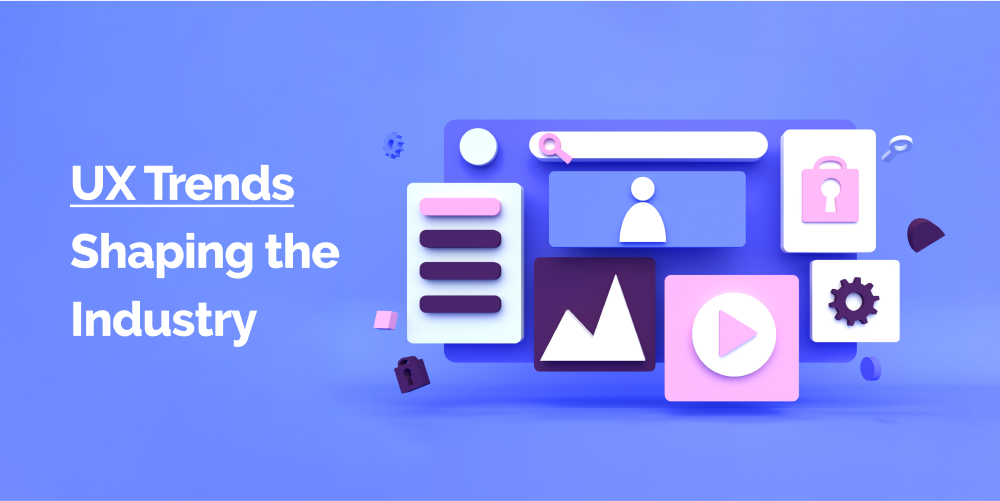UI and UX, zBlog
The Evolution of UX: 10 UX Trends Shaping the Industry in 2025
Team Trantor | Updated: September 4, 2023
User Experience (UX) Design is a dynamic field at the intersection of technology and human interaction. It’s an ever-evolving discipline that strives to create seamless, engaging, and user-friendly products, applications, websites, and digital spaces. As we step into 2024, the goals of UX design have doubled: to meet new user expectations and provide exceptional interactions while equipping businesses across industries with the tools to retain customers. An interesting fact to consider is that around 33% of consumer disengagement results in users not returning to a product.
Where is UX design heading in 2024? To answer this question, we sat down with a seasoned UX designer to gain insights into the UX trends that will define the industry this year.
10 UX Trends to Watch in 2024
A delicate balance between innovation in user engagement and a deep understanding of user needs marks the world of UX design in 2024. Rather than simply focusing on metrics, the industry is shifting toward the human design element. Here are 10 UX trends that will shape the industry this year:
1. Improved Cursor Interaction
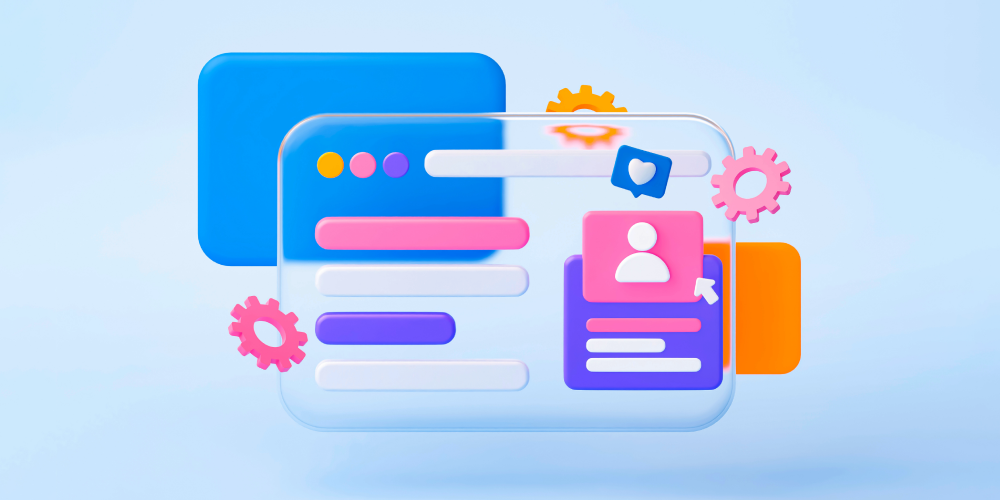
The humble cursor, a fundamental web design tool, is getting a makeover in 2024. It’s no longer just a functional pointer; it’s becoming a sophisticated design element pivotal in delivering intelligent and stylish user experiences.
We’ve witnessed cursor transformations over the past few years thanks to UX design tools like Figma. Designers are now customizing cursor shape sizes, adding animations, and enabling pre-made actions through UI inputs. These advancements delight users with enhanced design techniques and contribute to a more immersive user experience.
A seasoned UX designer emphasizes, “Incorporating the cursor as an integral part of user actions provides websites with subtle yet accurate feedback. It replaces many traditional buttons, aligning with the ethical and aesthetic principles of web design.”
2. Personalization
The era of personalization is in full swing, with platforms like Netflix recommending shows, Instagram suggesting shopping items, and Shopify curating playlists. Businesses are collecting user data, from demographics to behavior patterns, and leveraging artificial intelligence to make sense of it. Personalization benefits both businesses and users by delivering tailored online experiences without the need for explicit user input.
However, in 2024, UX designers are taking personalization to the next level. It’s not just about enhancing customer satisfaction but crafting meaningful user journeys. As technology advances, UX professionals need to set stronger boundaries and ethical guidelines to create interactions that resonate with users on a personal level.
A seasoned UX designer explains, “User personalization has gained momentum over the past year. Companies are striving to understand how to offer a complete package to users. Designers are adapting to users’ individual needs and aiming to establish a personal connection that respects the user while evoking emotional responses.”
3. Data Visualization
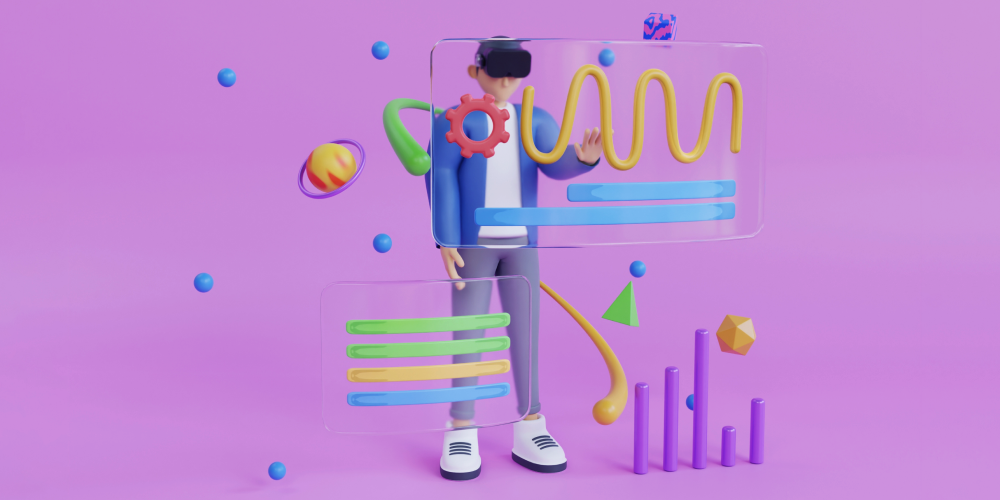
Data visualization is the art of presenting data in a visual format that enhances the user experience. It’s increasingly becoming a crucial element of UX design as it improves the way users interact with products and fosters trust.
A seasoned UX designer notes, “Analyzing and comprehending various forms of data used to be a task primarily left to professionals. However, today, it’s an integral part of how many applications and programs engage with their users.”
For instance, displaying screen time data on mobile devices has made users more conscious of their app usage. Moreover, applications like Lumen offer detailed insights into metabolism and energy levels, making users more informed about their health and fitness.
Among many UX trends being followed in 2024, brands will seek ways to leverage data to enhance user engagement while prioritizing aesthetics. Avital adds, “Data used to be presented using conventional charts and graphs. However, we are now witnessing applications that employ creative and personalized methods to make data more appealing.” A prime example is Spotify’s “Only You” feature, which uses colorful and trendy visuals to offer personalized music suggestions.
4. Dark Mode
Dark mode, a user interface design featuring dark backgrounds and bright text, is no longer a novelty; it’s becoming a standard in UX design. Platforms like Apple, YouTube, and Google have popularized dark mode in recent years, and it’s now gaining traction across various applications, websites, and products.
Users appreciate the sleek and modern aesthetics of dark mode. A seasoned UX designer explains, “Designers are drawn to dark mode due to its minimalistic and visually pleasing appearance. Anything that’s dark tends to look good.” However, aesthetics aren’t the only driving force behind this trend.
Dark mode also offers practical benefits. Santo elaborates, “Dark mode is part of an overall effort to reduce eye strain during prolonged screen usage. White screens emit light, while dark screens do not, making it easier on the eyes.”
In 2024, expect to see more apps, websites, and products adopting dark mode, and design tools that make it accessible to designers and developers. For example, Velo, a platform by Wix, allows users to easily enable dark mode for their websites without complex coding.
5. Small Interactions
Small interactions, often referred to as micro-interactions, are subtle visual movements that have a profound impact on UX design. Whether it’s a button animation, color change, or feedback cue, these micro-interactions aim to make user interfaces more engaging and enjoyable.
“A few years ago, micro-interactions were a hot topic in UX design,” says a seasoned UX designer. “Everyone talked about the benefits of providing users with feedback and transitioning from static to dynamic design elements.”
For example, Google popularized this trend by making buttons expand when users clicked on them. In 2024, this trend will continue to flourish, especially in mobile and desktop UX design. Refining micro-interactions is one of the key UX trends that brings delight, clarity, and personality to digital experiences.
Avital elaborates, “Users today expect responsiveness. They need to feel that the interface is alive.” An example from Wix Editor showcases how small images and color changes provide users with a sense of interaction as they build their websites.
6. New 3D Design Tools
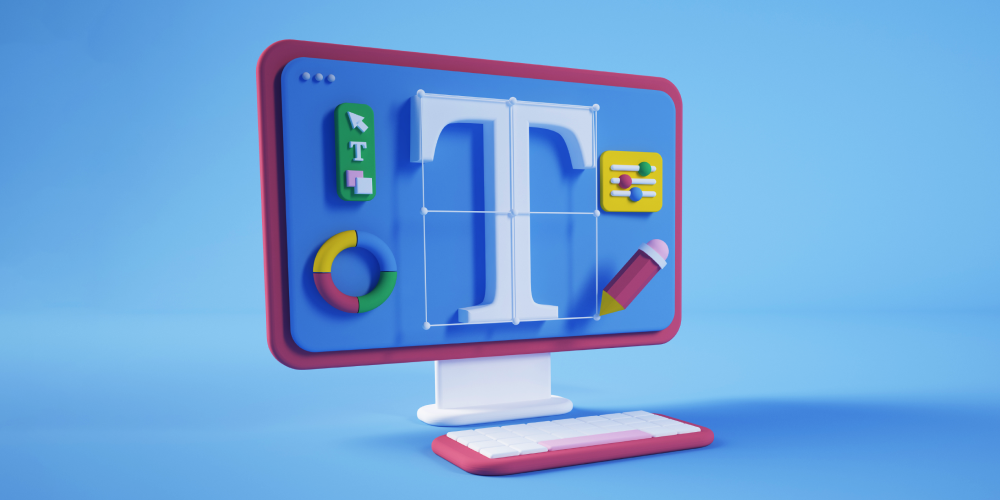
The use of 3D elements in UX design is not new, but in 2024, it’s all about the democratization of 3D design. As 3D elements gain popularity, the focus is shifting towards the development of user-friendly 3D design tools.
A seasoned UX designer notes, “The key shift lies in the new generation of 3D tools. We’re seeing 3D-based design content everywhere, whether it’s web-based or app development. In the past, creating 3D designs required complex systems, but now, new tools like those introduced by Illustrator make 3D design more accessible.”
The use of 3D elements can add depth and engagement to user interfaces, creating immersive experiences in various applications, from gaming to e-commerce.
7. Clean User Interfaces with a Twist
Clean and minimalistic user interfaces are timeless in UX design, but in 2024, they’re getting a twist. Designers are adding small, unexpected features to these flat designs to make them stand out.
A seasoned UX designer explains, “A few years ago, clean designs with standard, flat aesthetics were trending. Now, even flat designs incorporate subtle elements that capture users’ attention.”
One example is the Pitch application, which features a black-and-white interface with flat icons but incorporates sophisticated proportions, adding visual interest to a minimalist design.
8. The Emergence of Augmented and Virtual Reality

The rise of Augmented Reality (AR) and Virtual Reality (VR) as UX trends are reshaping the future of UX design. This transformation has gained momentum due to the COVID-19 pandemic and the Metaverse vision presented by Mark Zuckerberg.
a seasoned UX designer emphasizes, “AR and VR are having a profound impact on the future of design, redefining how users interact with products.” AR and VR projects aim to provide real-time, immersive experiences tailored to users’ environments and needs.
Expect to witness the establishment of new UX design principles as AR and VR become more mainstream, influencing industries beyond entertainment and gaming.
9. Game Experience in Non-Gaming Industries
The gaming industry has emerged as a formidable competitor to Hollywood, influencing UX design across various sectors. In 2024, brands will incorporate gaming elements into their websites, products, and marketing campaigns, offering interactive and playable content miming video game interactions.
A seasoned UX designer predicts, “Most companies will integrate gaming into their products, marketing, and campaigns in 2024. We’ll see gaming become an integral part of the web, creating new entertainment avenues for users.”
Balenciaga’s 2020 LookBook campaign is an example where a game precedes a visit to their website. Whether through small gamified elements on a website or fully integrated gaming strategies, this trend will surely capture users’ attention unexpectedly.
10. Responsive Design for Diverse Screens
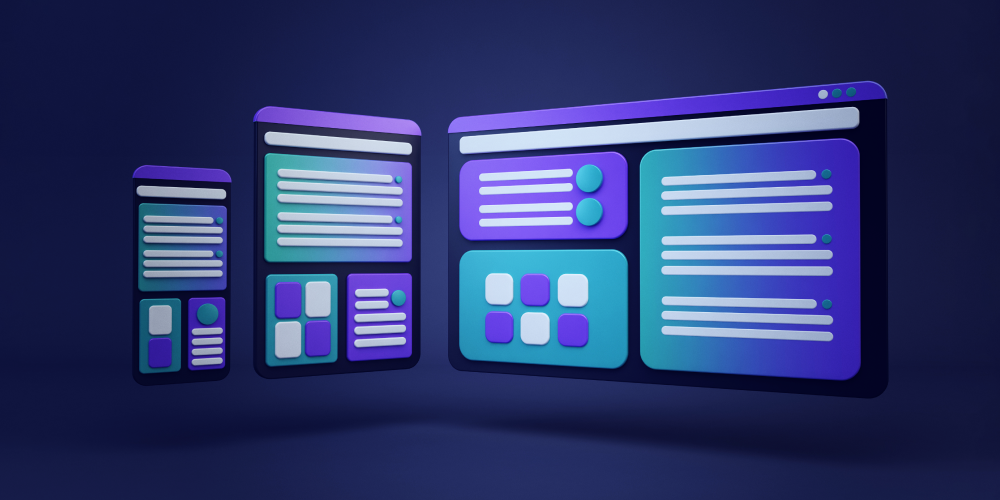
The ever-expanding array of screen sizes, from smartphones to smart TVs, presents a challenge for UX designers. Responsive design remains critical to ensure a consistent and user-friendly experience across all devices.
A seasoned UX designer reflects, “Responsive design has been around for a while but continually evolving. In 2021, approximately 55% of mobile traffic came from mobile devices. We’ve moved beyond thinking about which parts of our designs must be responsive; now, it should be everywhere.”
Responsive design tools like EditorX and adaptable design frameworks are essential for accommodating the diverse screen sizes and orientations users encounter in their digital journeys.
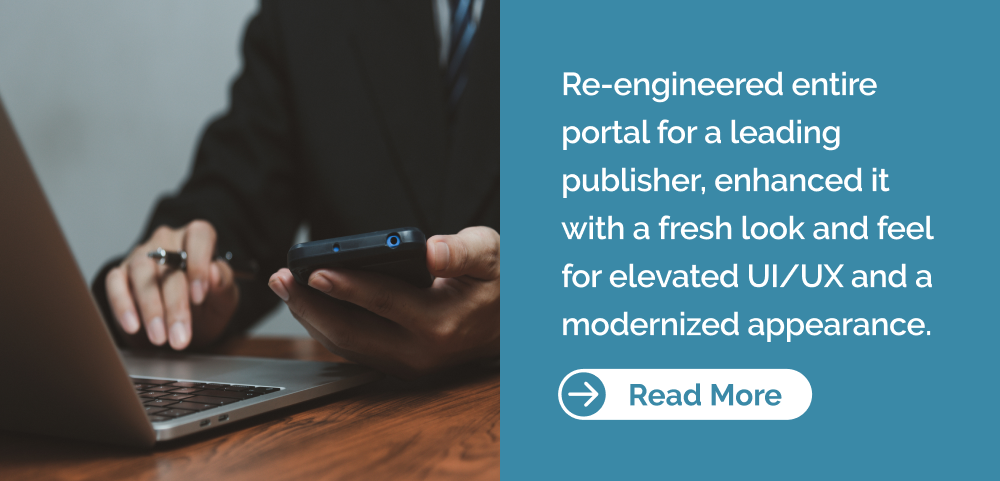
Conclusion
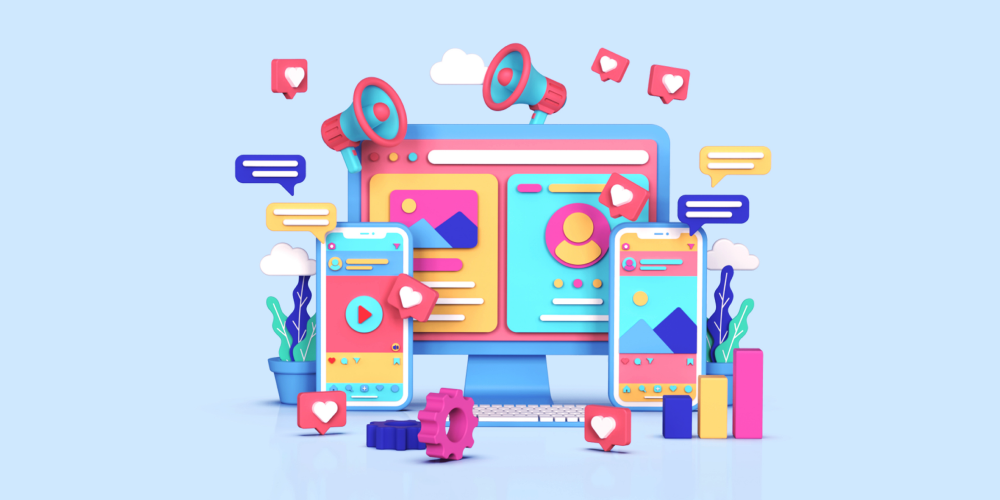
The field of UX design is experiencing a transformative year in 2024, marked by a shift towards more personalized, engaging, and aesthetically appealing user experiences. From cursor interactions to immersive AR and VR environments, UX designers constantly push the boundaries to create interfaces that captivate and serve users better. These trends reflect the industry’s commitment to delivering innovative, user-centered design solutions that meet the evolving needs of our digital world. As we continue to navigate this dynamic landscape, it’s clear that the UX design field is on a trajectory of exciting possibilities, where the fusion of technology and human experience continues to shape how we interact with the digital universe. The key UX trends to watch in 2024 include more conversational interfaces, frictionless experiences, and a focus on accessibility and inclusion.
At Trantor, we excel at bridging user expectations and business goals through UI/UX design, be it for mobile apps, websites, or social media. Our expert designers prioritize practicality, usability, and accessibility, fostering brand loyalty and a strong online presence. We provide adaptable UI/UX designs that ensure a seamless user experience, even in volatile markets. With our cross-platform design services, we transform user interfaces into lasting customer relationships. Let our talented team

